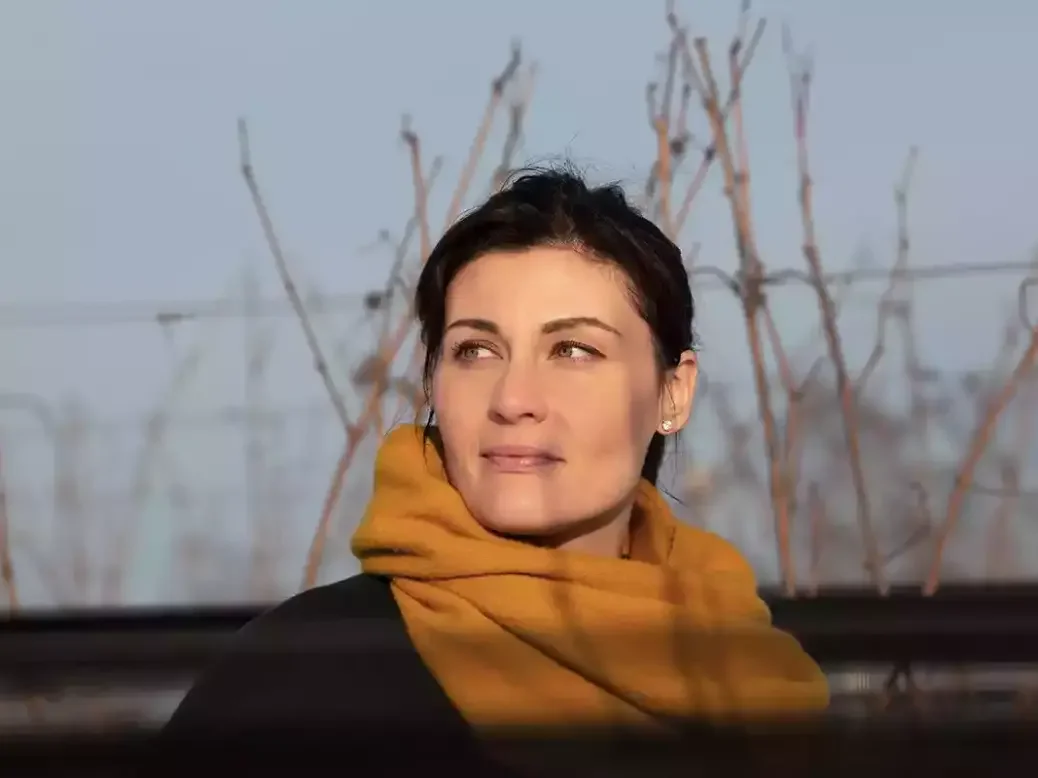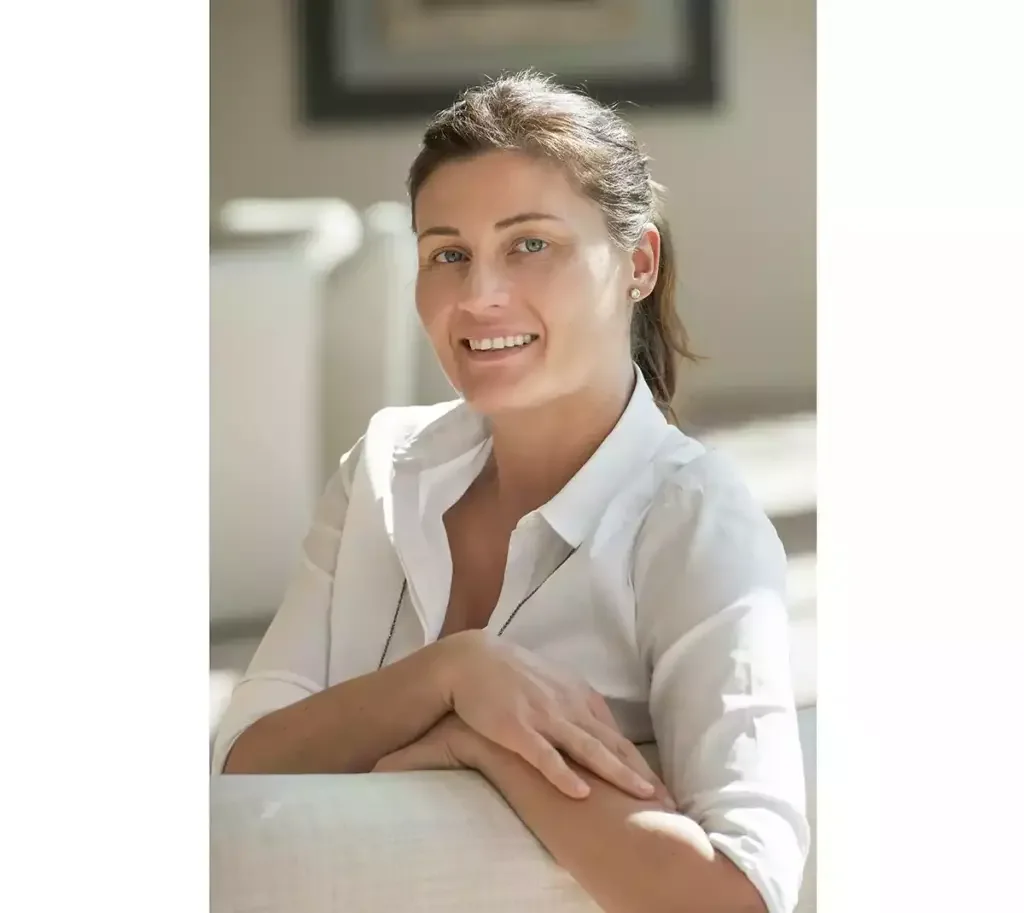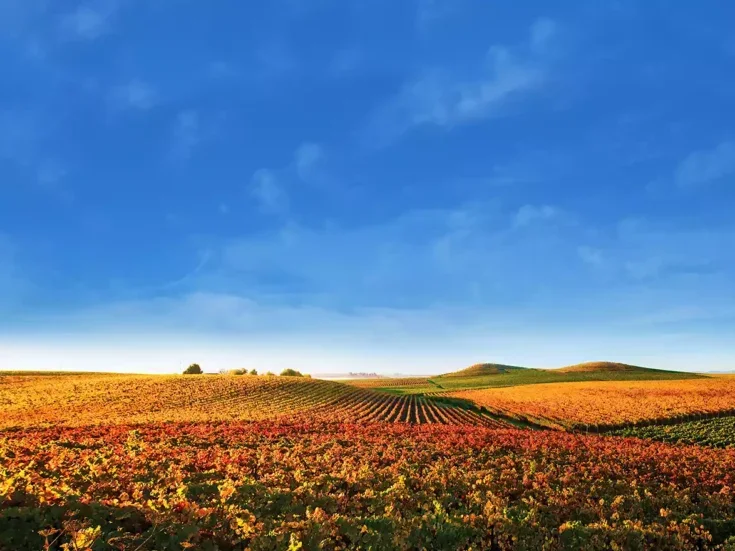
In the fifth of a series of series of extended interviews with leading wine growers marking 20 years of The World of Fine Wine, Gaia Gaja reflects on the past two decades in viticulture and fine winemaking at her family’s Italian estates in Piedmont and beyond.
Vignerons’ stories: Katharina Prüm
Vignerons’ stories: Eben Sadie
Vignerons’ stories: Jean-Baptiste Lécaillon
Vignerons’ stories: Véronique Sanders
Vignerons’ stories: Telmo Rodriguez
Vignerons’ stories: Francisco Baettig
Vignerons’ stories: Diana Snowden Seysses
Vignerons’ stories: Brian Croser
The elephant in the crystal room
Gaia Gaja: It’s interesting that we are talking about the past 20 years of viticulture, because it was 20 years ago that we started to change our viticulture at Gaja, driven by the sensitivity of my father toward climate change.
Twenty years ago we started, and today it’s impossible to talk about wine without climate change—it is the elephant in the crystal room.
The turning point in Piedmont was 1997. It was an opulent, gorgeous vintage. But it was the first vintage where we had burned berries, the spiking of heat and ripeness. Like everyone else, we are handling that better today. The vineyards are reacting completely differently from then. But 1997 was the moment when my father began to get a feeling that things were changing, he became much more alert about what was going on. He got worried.
No more great vintages
Gaia Gaja: It doesn’t make sense really today to talk about a “great vintage.” The idea made more sense 30, 40, 50 years ago, when you had one great vintage in a series of mediocre vintages. Today we have mostly good vintages, with one exceptional vintage among a series of good ones. In this sense, we have better-quality wines. Obviously, we are cultivating the land and we are frightened about the changes and challenges. But we also have to admit that we are making consistently better wines.
In a region with a grape variety like Nebbiolo, people think these are wines that you have to buy and store for ten years and decant for five hours. I meet credible collectors who have been collecting it for their whole lives who still have this outdated idea. I can’t tell them they’re wrong! But they are stuck in the past—the wines are very different now. My father has been repeating to me, “The wines of this century are different from the wines of the past century.” Years ago, I would listen to that message… now I really understand it.
In Barolo and Barbaresco, the wines are not better or worse. The wines today don’t have the austerity of tannins, and they are not so inexpressive for the first few years. We have some beautiful wines from the 1950s and ’60s that are good to drink now. You could say they were not fully ripe, but I would say they are just different in their ripeness. Today we have grapes that are more fruit-forward, riper, with lower acidity, and with riper and softer tannins—wines that are supple and easy-drinking from the beginning.
I really like the wines of today. When things got warmer, the producers started to change their style, in a way that I like. In this region, where we have a grape variety that is highly terroir-driven, an area that is so complex morphologically, where you can drink in the glass what you see—the steepness, the exposures, the soils—that expression is now more present and more vivid.
That isn’t only about climate change—it’s also about winemaking. We are beyond the stylistic fight of the 1980s and ’90s, when you could drink two wines from the same vineyard with different maceration techniques and oak treatments. In the past, the wines were so severe, so austere, so harsh… some producers would attempt to warm them up; in the 1960s, some people were keeping the wines under the roof. That wasn’t still happening in the 1980s, but there was a “rounding up,” with more oak and micro-oxygenation.
When the weather warmed up and the wines became sweeter, softer, and fruitier, some producers understood that it no longer made any sense to talk about modernist and traditionalist—the style of winemaking doesn’t impact so much now. There’s no longer a need to wrap up and round out the wines. Today the need is to preserve the freshness and integrity. And that’s why I like the wines of today. There are many fewer faults (brett and so on), no more dirty, old oak, or vanilla and cocoa and super-extracted tannins. I love the fact that you can sense the wine itself.
The advantages of a farming culture
Gaia Gaja: We have a great advantage here in Piedmont, in that we have a farming culture—and while climate change in an area where there are good farmers is still frightening, it’s not as frightening as it might be elsewhere. There is a chance to adapt to the changing terroir—to new areas, higher altitudes, and different slopes in the denomination—and we can all acknowledge who is adapting faster and better. Right now, people are talking about allowing irrigation, or allowing the cultivation on the northern slopes, when it was historically always only on the south, west, and east—these discussions are dividing producers in terms of how and where to cultivate Nebbiolo.
There are also discussions about what happens in the winery, because we have to preserve the freshness. We might use whole-cluster, which was not something we could do in the past. We might also use uncrushed berries and more lees, which were not used so much in the past, and larger casks, because they are more reductive. There is consideration of all types of oak, going back to Slavonian or Austrian or German oak, which is less porous. If the wine is naturally getting broader and more opulent, you need a barrel that is stricter.
A lot of little things can change in the winery, but the topic always come back to the vineyard. If you want to survive, if you want your vines to become resilient, you need to have an environment that supports, that functions symbiotically: it’s the concept of biodiversity and having soils that are alive, that are able to have more water, and having roots that can function in the extremes of the weather.
You can’t rely on the past
Gaia Gaja: In the past, what characterized a vintage was mainly rain during the harvest. Today, in four or five months you might have four or five dramatic episodes that can define a vintage. The experience of a farmer becomes important in this context, and improvisation is what saves us. We have to be very focused, we have to trust in our vineyards.
A lot of the work of a winemaker is deciding when to pick, and you can’t rely on the same decisions you used to make. In general, in the past, we always picked the western slopes first; now you can’t do that, because everything ripens more or less at the same time. Today, the tannins have to be fully ripe, but in that frame of ripeness we like to stay a little bit on the early side, to retain the freshness. The good thing about Nebbiolo, when compared to Barbera, is that it doesn’t continue to accumulate sugar after the skins are ripe. Nebbiolo allows you to wait for that full ripeness, without being too scared about the alcohol level.
Nebbiolo has been around here for at least 800 years. It’s historic, and on these hills it has been reproducing itself in an incredible variety and number of types. We have to preserve the biodiversity of Nebbiolo, because among these biotypes are those that are better adaptable to the changes of today, and they will be useful when we confront the challenges to come.
But Piedmont has been through an important evolution. The wines have found a lot of new admirers over the past 20 years—they are more successful, and the prices have gone up for everyone. It’s a small region, and the wineries are family-owned and ambitious—there’s healthy competition between producers, which leads to a lot of investment, in the cellars and in research. Starting in 2004, we started to collaborate with a botanist, then an entomologist, a geneticist, and a genealogist. We started to look at the effects of climate change on grasses, on insects, and on diseases. We looked at massal selection with the geneticist. But everyone is making investments.

Adapting to new climatic realities, from Langhe to Sicily
Gaia Gaja: Bolgheri is surprising me by how quickly quality has grown and how fast the producers have adapted. It’s a new region, and there are many new producers, with a very open and flexible way of working. In the minds of many people, it’s an area of big, opulent wines. In reality, it also has examples of very fresh, fine wines. And despite the extremes of the weather, the fact is that Bolgheri has been achieving consistently good results. There are cooling sea breezes between the coast and the mountains, and the Sirocco in Bolgheri is not as warm as it is in Montalcino.
In Montalcino, the Consorzio is a bit slow to bring about change—there has been a lot of talk about zonation for the past 16 years… But they also need to address the aging regulations—the wines are ready much earlier these days, so they don’t need to wait five years before release anymore. I also think that the style of Brunello di Montalcino has evolved, and that the wines are bigger—they don’t have the tension of Chianti, which is getting better and better.
To adapt to the changes, and to help the structure of the wine, we have vineyards at different altitudes and in different locations. We bought one vineyard at the highest point in the DO, at 620m [2,000ft], and we are very excited to see what comes out of there. It’s very rocky and very windy, and last year we had big problems with hail—so you can’t escape problems even here.
We thought about Etna as a place with altitude, too, a place where we can go higher and higher in the future, and where the varieties are very, very late-ripening—we start picking Carricante a week after Nebbiolo. The focus for us is not on the reds, but on Carricante—it’s a variety with great, vibrant acidity. The gamble is to see if we can develop enough structure—acidity is not enough on its own. We decided to invest on the south slope, where we thought we would be able to play with different altitudes to get different types of ripeness and to get the structure.
In Piedmont, there is a part of the Langhe that is five times bigger than Barolo and Barbaresco, the part at higher altitude
—the Alta Langhe. Over the next 20 years, wine production is going to develop a lot here. Barolo and Barbaresco is an almost total monoculture: 80% is vineyards and 20% woods, and over the past 40 years, lots of slopes where there used to be hazelnuts are now planted to vineyards. The Alta Langhe is still very natural and wild, but there can be a substitution of cultivation—fields of grain or hazelnuts can become vineyards. I don’t know to what extent the area of Alta Langhe will expand, but there’s no doubt that a lot of producers are getting interested.
The lessons of natural wine
Gaia Gaja: The moment of natural wine has largely passed, but it was a philosophy—a movement—that was very much needed at the time. It helped to get everyone thinking about the topic of manipulations, and that actually helped the more conventional producers, because it came to the attention of the consumer just how much manipulation there can be in wine, and they had to react. I got very interested in natural wines… and then I wasn’t so interested. The problem is that it doesn’t really define everything.
Of course, it can define someone who makes it, because they are embracing a lifestyle, and they believe in it—and I admire and respect them, even though many of them are not respectful of those of us who are not “natural.” But there are others who harvest and then they don’t go back to the cellar for six months… and that is not loving wine; it is not the way of someone like Nicolas Joly, of the people I admire. You also have people embracing “natural” as a trend in the market—there are plenty of industrial producers making natural wine, which is ridiculous, and also plenty of people who use it as an excuse for bad winemaking.
Natural wine usually starts in regions that are not so historic or iconic. In Barolo, there is a community, a culture, with a way of winemaking that is historic, so natural wine has not been so strong there. It’s a little bit like the modernists and the traditionalists. The modernists helped the traditionalists, especially when those wines were so popular and the traditionalist wines were not—the traditionalists had to face their issues, and they faced them in the modernist way. Then the modernist approach—partly because of climate change—started to give wines that were a little over the top. They started to be too international in style, and they had to face up to that and come back to a more “traditionalist” way.
How to be a family vigneron
Gaia Gaja: Over the past 20 years, I have grown much more comfortable and more confident. I always said my reference point is my father. It’s frustrating to work with him, because there are many moments when we don’t think alike. But then I have to admit he is right… that’s the most frustrating thing!
The thing I admire about my father is that he always brings a different point of view—even if this can also be frustrating. So many times my sister, my brother, and I are all aligned and convinced that we have made the correct decision… and he comes back with a completely different point of view. But it’s valuable, even if you don’t agree 100% (maybe 30% or 50%…)—it takes you away from the mainstream.
But I still feel more confident, because I have more experience, and so have my brother and sister. We have different ideas… but we have the same level of involvement, and we love each other, so we have no conflict—and this makes me optimistic for the future.






